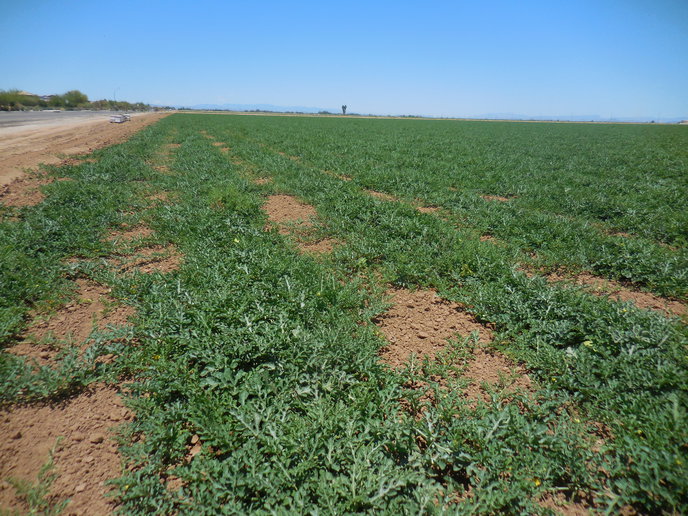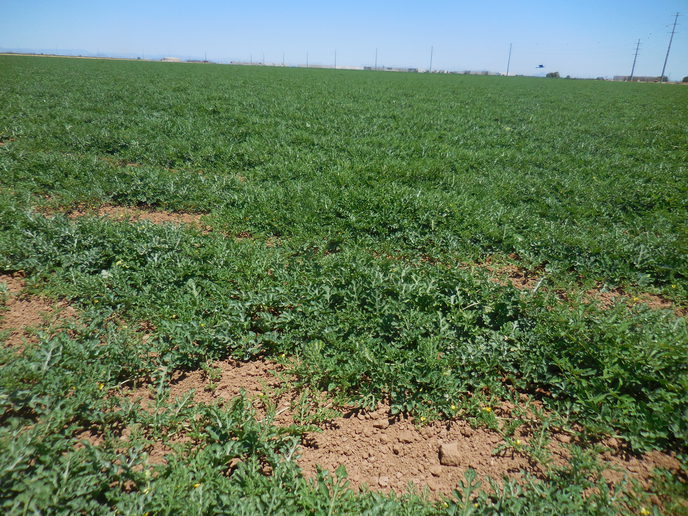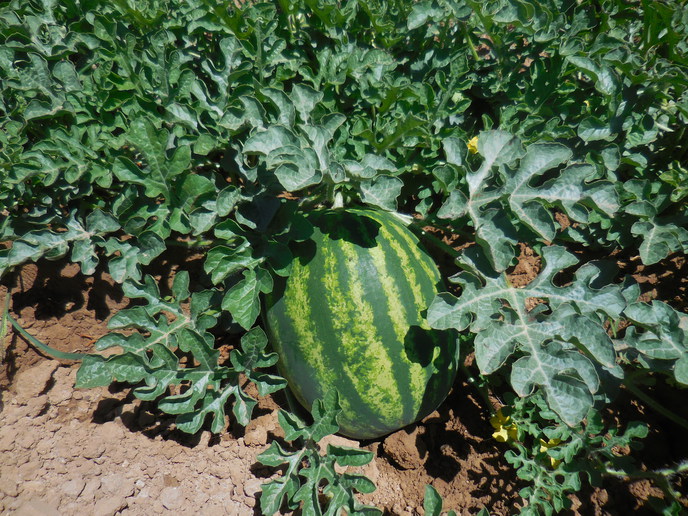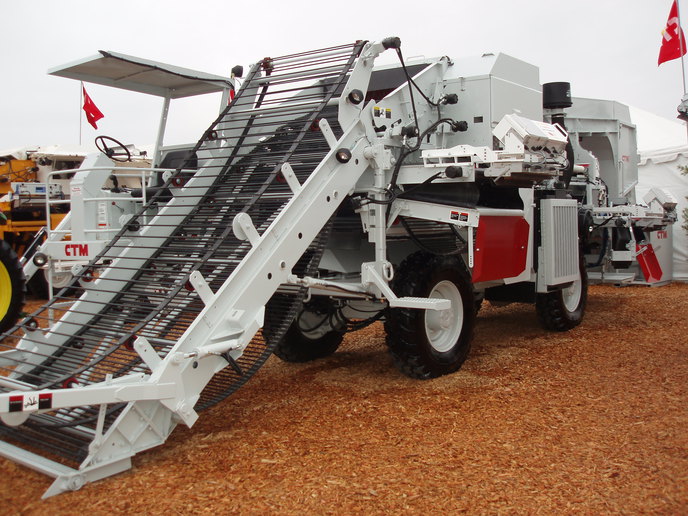Tom OConnor
Member
All spring I was curious just what these farmers were planting. Six foot rows and planted under plastic film and hundred and hundreds of acres of what ever it was. The plastic came off about three weeks after they were planted then there were boxes placed every so often along the edge of the road and then every so often down certain rows. I talked to one of the workers and the boxes are full of bees to help with the pollination and most all the fields are planted at a certain date so that harvest is late June as to coincide with the fourth of July Holiday. Bigest market for water melons that time of year. This field covers at least a half of a section. Can't imagine what a job to pick all those when they get ripe.



<img src=



<img src=


